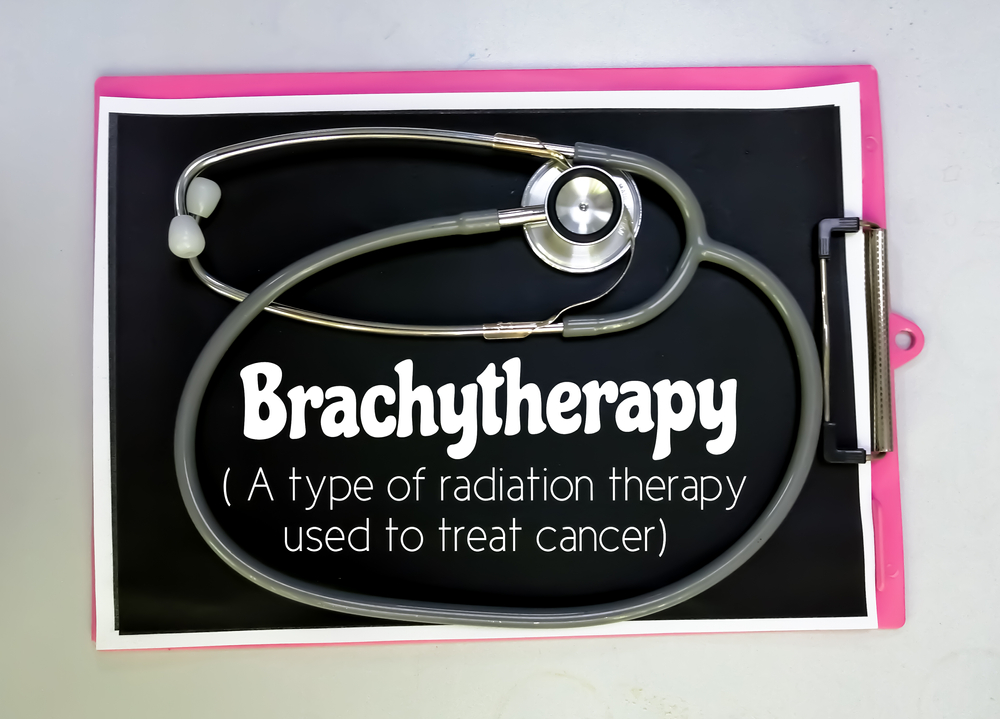Brachytherapy

Optimal care of cancer patients requires a multidisciplinary approach. It usually involves surgery, radiation and chemotherapy, often in different combinations or sequences.
Radiation oncology is a branch of medical sciences that uses radiation to treat cancer and other diseases or conditions. The aim of radiation therapy is to deliver a precise dose to a predefined target volume while minimizing dose to nearby tissues. Radiotherapy uses photons, electrons protons and other particle beams like carbon ion to treat cancer or other conditions. The most commonly used forms of radiotherapy in the treatment of cancer Eternal Beam Radiotherapy and Brachytherapy. Linear accelerators are commonly used to deliver External beam Radiotherapy.
Brachytherapy is derived from a Greek word “Brachy” which means short. It involves placement of temporary or permanent radioactive source in the target tumors. Most common use of Brachytherapy is seen in cancer of cervix and endometrium. It is also used in the treatment of cancers of prostate, soft tissue sarcoma and breast cancer.
Purpose:
A variety of cancers are treated by brachytherapy either as standalone modality of in combination of External Beam Radiotherapy. Most common use of Brachytherapy is seen in cancer of cervix and endometrium. It is also used in cancers of prostate, soft tissue sarcoma and Breast cancer.
Procedure:
Brachytherapy: Brachytherapy employs radioactive sources that are sealed and put directly into tumors (interstitial) or bodily cavities (intracavitary). Treatment can be administered at different dosage rates :
Low dose rate brachytherapy (LDR) Once the patient is in a shielded chamber, an 'applicator' is put in the cavity or inside the tumour, and the source is supplied into the applicator. They will stay isolated until the source is gone (usually 12-24 hours). This procedure frequently necessitates hospitalization.
High dosage rate (HDR) brachytherapy: Accounts for a brief time interval of therapy. As a result, HDR can be given as an outpatient treatment and admission to wards is not required.
Side effects:
The side effects of radiation therapy including brachytherapy vary depending on the region treated and how much radiation dose has been given. For majority side effects are minimal and manageable. Most adverse effects are transient, normally diminish when therapy is completed. Some risks of radiotherapy involve:
Hair loss (possibly permanent), skin sensitivity at the treatment site, and exhaustion
Head and neck: dry mouth, thickened saliva, trouble swallowing, painful throat, changes in food taste, nausea, mouth sores, tooth decay
Chest: Swallowing difficulties, coughing, and shortness of breath
Abdomen: Nausea, vomiting, and diarrhoea
Pelvis: Constipation, urinary frequency, irritation of the bladder, and erectile dysfunction
Conclusion:
Radiotherapy is an important modality of cancer treatment. About 50–60 percent of new cancer cases require radiotherapy in the course of their treatment. Another 15–20 percent of cancer patients require re-irradiation. Radiotherapy is primarily delivered in two main ways: External Beam Radiotherapy and Brachytherapy. Most common use of Brachytherapy is seen in cancer of cervix and endometrium. It is also used in the treatment of cancers of prostate, soft tissue sarcoma and Breast cancer.


